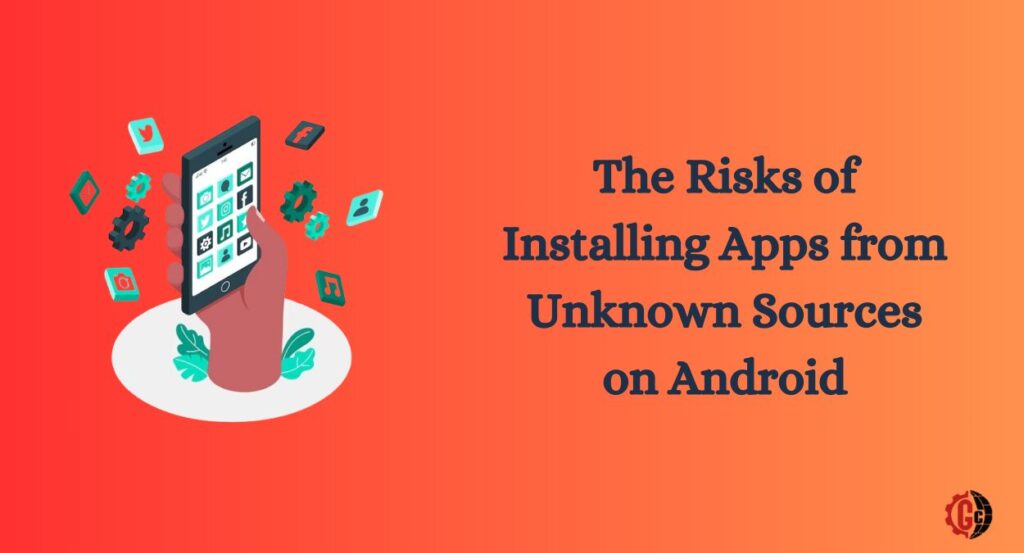Risks of Installing Apps from Unknown Sources: In today’s digital age, where smartphones have become an indispensable part of our lives, ensuring the security of our devices is paramount. Android, being one of the most popular operating systems globally, offers a plethora of features and customization options. However, this flexibility also comes with its own set of challenges, particularly concerning app downloads from unknown sources.
This comprehensive guide aims to delve deep into the risks associated with installing apps from unknown sources on Android devices. From understanding the potential threats to implementing effective preventive measures, we’ll cover everything you need to know to safeguard your device and personal data.

Understanding the Risks of installing apps from unknown sources
Installing apps from unknown sources refers to downloading and installing applications from platforms other than the official Google Play Store. While this may seem like a convenient way to access a wider range of apps, it exposes your device to various security risks, including:
- Malware Infections: Third-party app stores or websites offering APK files (Android application package) may host malicious software disguised as legitimate apps. Once installed, these apps can compromise your device’s security and steal sensitive information.
- Data Theft: Malicious apps installed from unknown sources can gain unauthorized access to your personal data, including contacts, messages, photos, and login credentials. This information may then be exploited for fraudulent purposes or sold on the dark web.
- Vulnerabilities: Apps obtained from unofficial sources often lack the rigorous security checks performed by Google Play Protect. As a result, they may contain vulnerabilities that hackers can exploit to gain control of your device or inject malware.
Protecting Your Device: Strategies and Solutions
1. Parental Control Apps
One of the most effective ways to block app downloads on Android devices is by using dedicated parental control apps. These applications offer comprehensive features, including:
- App Permissions: Granular control over app installations, allowing you to whitelist or blacklist specific apps.
- Content Filtering: Filtering of age-inappropriate content and websites to ensure a safe browsing experience for children.
- Screen Time Management: Setting limits on screen time and usage patterns to promote healthy device usage habits.
Top 3 Parental Control App Options:
- Google Family Link: A free parental control app from Google offering basic yet effective download blocking features.
- Custodio: A premium app providing comprehensive control over child devices, including a full app blocker.
- Norton Family Premier: Another excellent paid solution for monitoring child device activities and blocking app downloads.
2. Google Play Store Controls
For less restrictive control over app downloads, you can utilize the built-in parental controls within the Google Play Store. These controls allow you to:
- Supervise Downloads: Enable parental controls to prevent unauthorized app installations while still allowing access to approved apps.
- Content Filters: Set up filters for apps, games, movies, and other content categories to align with your preferences and restrictions.
3. Disabling Install from Unknown Sources
Android devices come with a setting that allows the installation of apps from unknown sources, i.e., sources other than the Play Store. Disabling this setting can significantly enhance your device’s security by:
- Universal Blocking: Preventing the installation of apps from untrusted sources across all apps and browsers on your device.
- Mitigating Risks: Minimizing the risk of downloading malicious apps or unintentionally installing harmful software.
4. Device Administration Tools
Organizations or institutions managing Android devices may leverage Mobile Device Management (MDM) solutions to enforce device restrictions. These tools enable administrators to:
- Blacklist Apps: Restrict the installation of specific apps deemed unsuitable or insecure for organizational use.
- Enhanced Control: Implement additional security measures and policy enforcement to protect sensitive data and ensure compliance.
Implementation Guide: How to Block Downloads on Android
Using Parental Control Apps:
- Create a Child Account: Set up a separate child account on the device.
- Install the App: Download and install your chosen parental control app on both your device and the child’s device.
- Configure Settings: Open the app and enable the option to block app downloads. Customize settings as per your preferences, including app blacklisting and content filtering.
Google Play Store Controls:
- Open Play Store: Launch the Google Play Store app on the device.
- Access Settings: Tap on the profile icon in the top-right corner and navigate to Settings.
- Enable Parental Controls: Locate the Parental controls option and toggle it on. Follow the prompts to set up a PIN for supervision.
- Customize Restrictions: Adjust settings to block specific apps and apply content filters according to your requirements.
Disable installing apps from Unknown Sources:
- Access Device Settings: Open the device Settings app.
- Navigate to App Settings: Go to Apps & notifications > Special app access.
- Disable Unknown Sources: Locate the option for installing apps from unknown sources and toggle it off to prevent unauthorized installations.
Must Read:
- How to Send Audio Message from iPhone to Android
- Comprehensive Guide: How to Change App Size on Android in 2024
- Quick Guide to Blocking Multimedia Messages (MMS) on Android Devices in 2024
Frequently Asked Questions (FAQs)
1. Can I selectively allow app downloads for certain accounts?
2. Will a factory reset remove the blocked app download restrictions?
3. Can I block downloading only specific apps?
Conclusion
In conclusion, safeguarding your Android device against the risks associated with app downloads from unknown sources is essential in today’s digital landscape. By implementing the appropriate security measures and utilizing the available tools and solutions, you can mitigate the threats posed by malicious software and unauthorized installations.
Whether you opt for dedicated parental control apps, leverage built-in Google Play Store controls, or enforce system-level restrictions, prioritizing device security should be a top priority. Remember to stay informed about the latest security threats and best practices to ensure a safe and secure mobile experience for yourself and your loved ones.